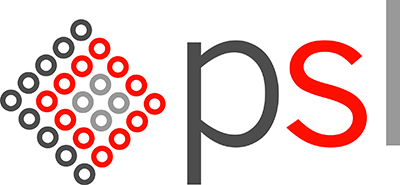With more potent drugs gaining market approval, Michelle Frisch of Powder Systems Ltd (PSL) looks at the issues of containment when milling and offers some solutions.
Milling any compound is a challenge, but having to mill high potent or cytotoxic materials creates more of a problem. When milling a compound of any type, there is never a common mill that is used to gain the correct particle size: not only do manufacturers have to mill different compounds, they also have to use multiple types of milling equipment.
Some milling equipment is used very infrequently but still requires the complexity of applying high containment. Seeking to contain each type of mill, however, could run up costs well into millions of dollars. So to provide high containment for milling processes, companies should first identify what mills are used and how often. Quantities of compounds and container sizes also need to be evaluated. This then becomes the directive on what approach a company needs to take to develop a solution.
Another area to consider is the operator exposure level that is required. Some compounds need containment but not to the nanogram-level. If companies have newly developed compounds that do not have a toxicity yet assigned, they then have to default to the nanogram levels. By taking the above items into consideration, companies can develop a clear vision of what needs to be accomplished to contain their milling processes. Containment can be achieved with valves suited to high containment processes or gloveboxes.
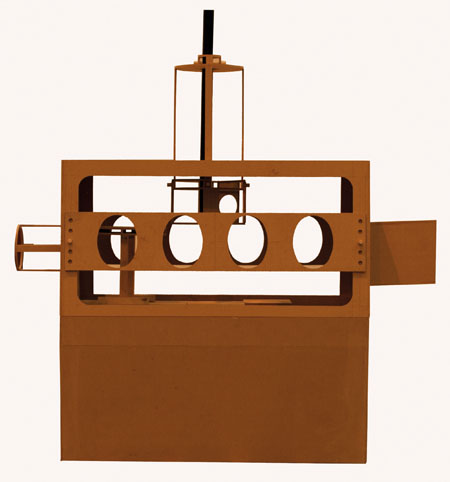
Figure 2: A full-scale mock-up of a glove box isolator
Match valves with process requirements
There are many types of high containment valves in the marketplace. The choice really depends on the process and how much handling is going to be required. Different valves types also suit various containment requirements and process needs and include Ezi Flow, EZi Dock or Buck valve, to name a few.
Where a company is planning to mill large quantities of compounds and use one mill type, it can implement high containment valves on the inlet and outlet of the mill. This is dependent on the size of the equipment, however. Where companies have one compound that is rarely handled and it requires high containment, a closed system is created by fitting the active half of the valve on the inlet of the feeder (volumetric if required) and another active half on the outlet of the mill, hence achieving the containment. If a material has a containment level that is not that stringent, it can be off-loaded by using a continuous liner system (see Figure 3). This type of system can have additional extraction provision added.
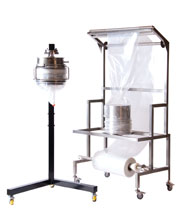
Figure 3: Continuous liner systems and loading table
The use of a feeder can provide a constant feed rate, which helps eliminate any bridging of the product. This is important as the system now is closed through the utilisation of the valves. The feeder and mill will require a nitrogen purge to eliminate any dust explosion risk. An added benefit of a completely closed system is that the nitrogen environment has a relative humidity of less than 1%, which is beneficial for compounds that are hygroscopic.
Containment valves (depending on the type chosen) can be provided with clean-in-place (CIP) systems that can clean down the whole process train. If there are any breaks in the system, these need to be evaluated and the required gasket material chosen to ensure that there are no breaches of the system.
Selecting the right glovebox technology
If smaller mills are required for high containment compounds, pharmaceutical producers can either contain each mill, which can come with a million dollar price tag, or have the flexibility to use one glovebox that is versatile enough to accommodate many different types of mills.
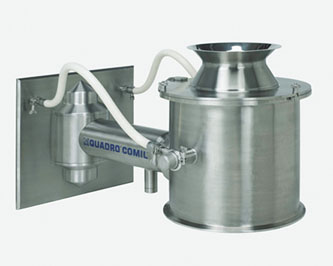
Mill option
Some designs require the mill to be mounted on individual skids with plug and play control. Only the mill itself would be presented to the interior of the glovebox. Any drive would be kept external. This provides the added benefit of being able to repair a mill easily if it shuts down during a milling operation, as the drive and motor are external to the process end of the mill.
What this means is that with one glovebox system, a company can install and remove many different mills, thus providing optimum flexibility for the milling of high potent compounds or cytotoxics (see Figure 1). However, if the pharmaceutical manufacturer has a product that is required in large quantities and needs nanogram containment, it might be worth having a dedicated glovebox system.
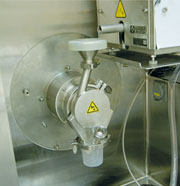
Mill option
The glovebox offers the advantages of a nitrogen-purged environment, nanogram containment and the added benefits of a small area to clean along with better control over cross-contamination if using different compounds on the same mill.
Gloveboxes have built in clean-in-place (CIP) systems that can be validated. Cleaning and disassembly of the mills is a critical component and attention needs to be paid to how the mill is assembled and disassembled. Such tasks have to be accommodated through gloveports and gloves. This can prove to be difficult and modification of the mill might be needed.
Good design is critical, and attention to the pressures of each mill needs to be considered. Control for each mill needs to be ‘plug and play’ and relates to the pressure requirements.
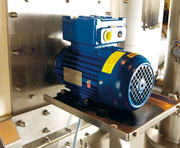
Mill option
If using multiple mills in one glovebox, important things to consider are the ergonomics and the workability of the glovebox design. Never purchase a glovebox without having a full-scale mock-up created and placed on site. This provides the opportunity to evaluate the functions and compound sizes that need to be accommodated. Technicians can ‘mock up’ the milling activities inside the glovebox. If any issues or concerns arise they can be addressed and the design can be modified.
Off-loading the milled compound can be achieved through a variety of methods: using high containment valves, rapid transport systems (RTPs) and continuous liner systems, or directly into the next piece of process equipment.
If traditional technology suits – use it
Even traditional technologies (i.e. full suits) have their place and should be considered for milling large quantities or for one-time events. If large quantities of material need to be milled on older equipment or equipment that is not suitable for containment, it is neither cost effective nor productive to try and contain it. Cleaning these systems can prove to be a challenge as disassembly in a glovebox is impossible. If a glovebox manufacturer claims they can do it, arrange to see a system that is working and speak with technicians first. It is possible, but very unlikely, that a system of this type would achieve what is required. Something will be compromised.
However, the operation can be evaluated to see where improvements can be made to reduce the dust or compound scatter that can occur. Particular attention can be paid to the off-loading activity and some containment systems can be applied.
In summary, by careful analysis of the essential factors an effective strategy can be developed that accommodates the requirements for achieving high containment milling without spending a million dollars.
| Key elements to consider | |
| 1 | Operator exposure limit to be accommodated |
| 2 | Container or drum sizes to be handled |
| 3 | Mill type required for each compound |
| 4 | Off loading containers |
| 5 | Ergonomics |
| 6 | Cleaning requirements |



